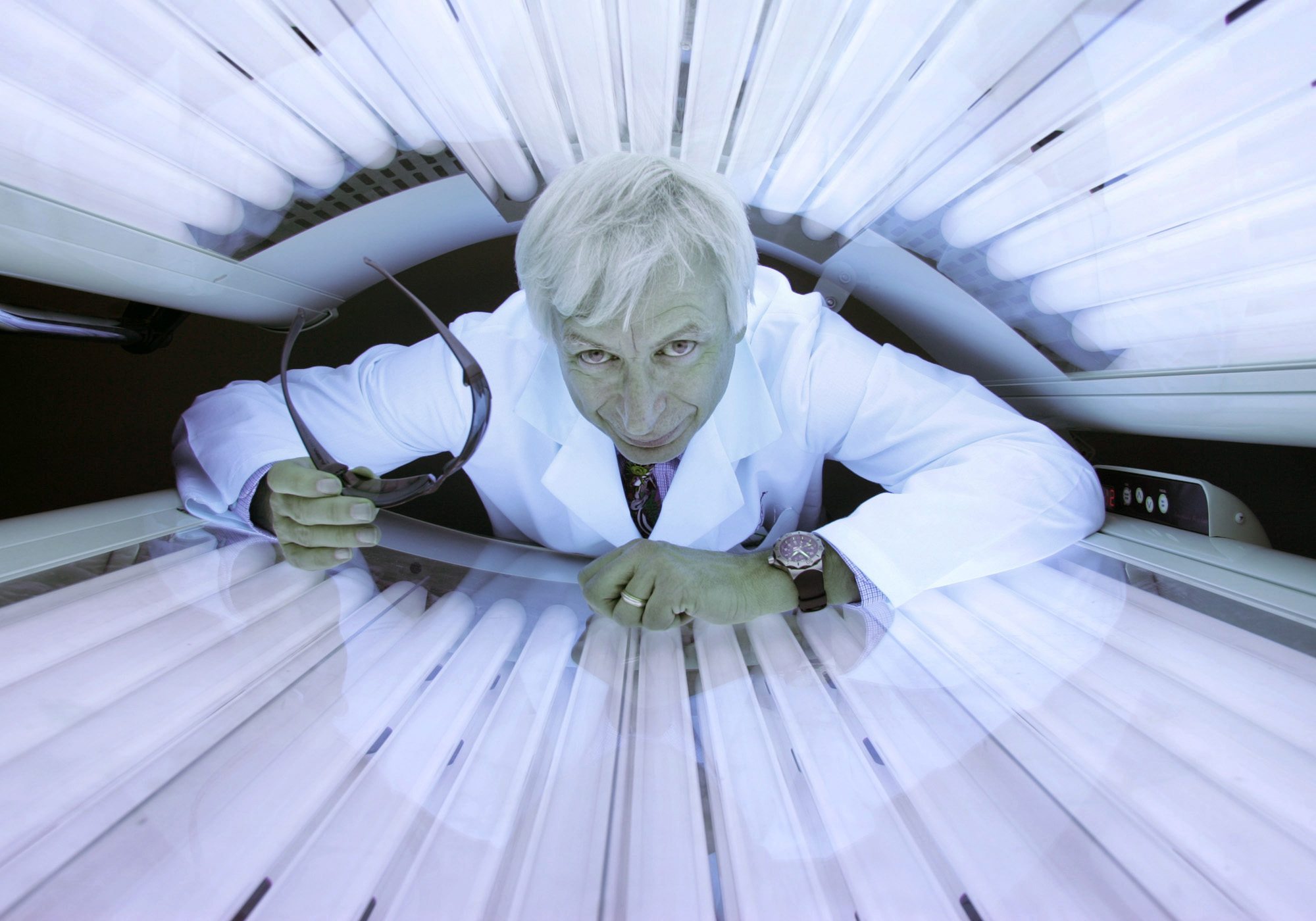The cold, cloudy winter weather — and pale skin that accompanies it — is reason enough for many people to turn to indoor tanning salons for a taste of the warm summer weather and bronzed skin to come.
An estimated 25 million Americans visit indoor tanning salons each year, according to the Indoor Tanning Association.
People report benefits of tanning that range from the browned skin and improved emotional health to headache relief and increased vitamin D. Some also report a euphoria from the endogenous opioids released during tanning, a feeling similar to that of a “runner’s high.”
But many dermatologists warn those benefits come with a risk. At the top of the risk list: skin cancer.
Many cancers in the United States are on the decline. Melanoma is among the handful of cancers on the rise.
The American Cancer Society estimates that more than 76,000 people across the country — 2,140 of them Washington residents — will be diagnosed with melanoma of the skin in 2012.
Melanoma incidence rates have been increasing for at least 30 years. Since 2004, incidence rates among white people have been increasing by almost 3 percent per year in both men and women, according to the American Cancer Society.
“The interesting thing about melanoma is, it’s going up particularly fast in young women, and that’s thought to be directly related to tanning beds,” said Dr. Craig Hersh, a dermatologist at Kaiser Permanente.
In addition to tanning bed use, risk factors for melanoma include excessive sun exposure, a personal or family history of melanoma and the presence of atypical or numerous (more than 50) moles, according to the American Cancer Society.
Dr. Zheng Qian (pronounced Chen), dermatologist and chair of dermatology at The Vancouver Clinic, said the increase in melanoma could be attributable to many factors.
The growing popularity of tanned skin, whether through tanning beds or outdoor sunbathing, may be partly to blame. Another possibility is better, and earlier, diagnosis of melanoma, Qian said.
Despite the increase in diagnoses, the death rate for melanoma has been declining rapidly — 2.9 percent per year in men and 2.3 percent per year in women — in white people younger than 50.
Tanning risks, benefits
Tanning salons use lamps that emit both ultraviolet A and B rays. UVB rays induce sunburn more readily. UVA rays penetrate the skin deeper, which results in a delayed effect, Qian said.
In 2009, the International Agency for Research on Cancer concluded that tanning devices that emit ultraviolet radiation are more dangerous than previously thought. The agency, which is part of the World Health Organization, reclassified the beds into the highest cancer risk category: “carcinogenic to humans.”
But John Overstreet, executive director of the Indoor Tanning Association, said the tanning bed bulbs mimic noonday sun. The ultraviolet lights used for tanning beds have the same risks and benefits as exposure to the natural ultraviolet rays of the sun.
“More and more, we’re seeing people who go to indoor tanning because they want the benefits of vitamin D,” he said. “It makes you look better. It makes you feel better. And that’s why so many people enjoy doing it.”
Vitamin D has many roles in the body, including promoting calcium absorption, tempering immune function and cell growth, and reducing inflammation, according to the National Institutes of Health.
A recent report published by Norwegian researchers in Public Health Nutrition, a peer-review journal, suggests the improved levels of vitamin D are more important than the possibility of an increased risk of melanoma.
The research found that increased sun exposure in the Norwegian population might mean 200 to 300 more melanoma deaths per year but would elevate vitamin D levels and might result in 3,000 fewer cancer deaths overall. Other benefits include protection against infectious diseases and noncancerous diseases, according to the report.
“This supports what many vitamin D researchers have said for years, that vitamin D generated by ultraviolet light, either from the sun or a sunbed, can be part of supporting good health,” Overstreet said.
But dermatologists argue that tanning beds are not the best source of vitamin D. Diet and supplements remain the preferred sources, they said.
“You’re flooding your skin with this tanning light,” Qian said. “Yeah, you got a lot of vitamin D, but you’re also exposing yourself to an unnecessary risk.”
Vitamin D synthesis doesn’t require excessive sun exposure, Qian said. The typical exposure a person’s arms, legs and face get to the sun is enough to synthesize vitamin D, he said.
The local dermatologists agree there likely is a safe amount of sun exposure, whether artificial or natural, for a person to have without increasing the risk of cancer.




